Acute: Relatively severe and of short duration.
Adjustment: A specific thrust or pressure delivered at the right time, location and angle to add motion to a dysfunctional spinal joint.
Arthritis: Inflammation of a joint that is often accompanied by symptoms and changes in structure.
Atlas: The top and most freely moving bone of the spinal column, at the top of the neck below the skull.
Axis: The second cervical vertebra.
Bone Spur: A bony outgrowth. A Calcium deposit that can be part of the body’s response to abnormal motion or position of bones in the spine or elsewhere.
Cervical: The vertebrae of the neck, usually seven bones.
Chronic: Persisting for a long period of time. A problem showing little change or of slow progression.
Coccyx: A series of small bones below the sacrum that are also known as the tailbone.
Compensation Reaction: A new problem that results from the body’s attempt to respond to a problem elsewhere.
Compressive Lesion: A malfunctioning spinal bone or soft tissue that puts direct pressure on a nerve, distorting its function. A relatively rare phenomenon that is commonly referred to as a pinched nerve.
Disc: A cartilage cushion/pad that separates spinal vertebrae, absorbs shocks to the spine, protects the nervous system and assists in creating the four normal curves of the spine. Discs can bulge, herniate or rupture, but because of the way discs connect to the vertebrae above and below, they can’t actually ‘slip’.
Facet: the joint surface of a spinal bone, facing the adjacent bone above or below.
Facilitative Lesion: A twisting, stretching, chafing or irritation of nerve tissue from malfunctioning spinal structures.
Fixation: Being held in a fixed position. “Stuck.” A joint with restricted movement.
Foramen: An opening, hole or passageway in a bone for blood vessels or nerves.
Health: A state of optimal physical, mental, emotional and social well-being and not merely the absence of disease and infirmity. When your body works the way it was designed to work.
Herniation: A protrusion of an organ or part of an organ through the wall that normally contains it.
Hypermobility: Too much movement.
Hypomobility: Restricted movement.
Ilium: One of the two large bones that form the pelvis; the hipbone.
Inflammation: A reaction of soft tissue due to injury that may include malfunction, discomfort, rise in temperature, swelling and increased blood supply.
Intervertebral Foramina: The lateral opening through which spinal nerve roots exit on each side of the spinal column formed by each joint.
Kyphosis: A backward displacement in the lateral curve of the spine.
Lateral: The side view of the body.
Ligament: A band or sheet of fibrous connective tissue that binds joints together.
Lordosis: The forward curve of the spine, normally found in the cervical and lumbar areas.
Lumbar: the vertebrae of the lower back, usually five bones.
Nucleus Pulposus: The gelatinous mass in the center of a spinal disc.
Occipital: Pertaining to the lower, posterior portion of the head or skull that rests on the spinal column.
Palpation: Examining the spine with one’s fingers; the art of feeling with the hands.
Pinched Nerve: (See Compressive Lesion)
Posterior: Toward the back of the body.
Range of Motion: The range, measured in degrees of a circle, through which a joint can be moved.
Reflex: An involuntary output based on a specific input.
Sacroiliac: The two joints where the hip bones connect to the sacrum.
Sacrum: The triangular bone at the base of the spine, made of five bones that fuse into one during the teenage years.
Scoliosis: Looking from the back, a sideways curvature of the spine. This can be congenital (born with it) or functional (due to misaligned spine). Congenital scoliosis is permanent, whereas functional scoliosis can show changes.
Slipped Disc: An incorrect name given to a situation in which a disc becomes wedge-shaped and bulges. In extreme cases, pressure can cause a disc to tear or rupture.
Spasm: A constant contraction or tightening of a muscle.
Spinous Process: The protruding part of the back of each spinal bone that can be seen or felt when examining the spine.
Subluxation: A misalignment or malfunction of the spine that is less than a total dislocation, and affects the nervous system and its ability to correctly control or monitor the organs and tissues of the body.
Tendon: Fibrous tissue that connects muscles with bones.
Thoracic: Pertaining to the twelve vertebrae of the middle back, from the base of the neck to about six inches above the waistline, to which the ribs attach.
Torticollis: A contracted state of the neck muscles that produces a twisting of the neck and unnatural position of the head.
Transverse Process: Lateral protrusions (wings) on the side of each vertebra to which powerful muscles and ligaments attach.
Trigger Point: An involuntarily tight band of muscle that is painful when pressed and can refer pain to another part of the body.
Vertebra: Any of the individual bones of the spinal column.
Vertebral Subluxation Complex: Types of pathology resulting from a Vertebral Subluxation including kinesiopathology (abnormal positioning or motion of the spinal bones), neuropathophysiology (interference with the communication between the central nervous system and the body), myopathology (muscular dysfunction), histopathology (disease in the tissues of the body) and pathophysiology (physical and biochemical changes caused by disease).
Whiplash: An injury to the spine caused by an abrupt jerking motion either backward, forward or to the side. Usually the result of a motor vehicle accident.

